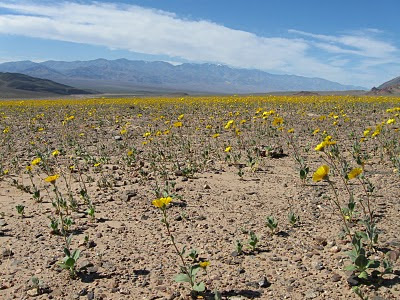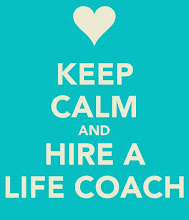 Finally, my long overdue second installment of our trip to the Big Island of Hawai’i in November (yes, five months later, I know). When we last left off, Peter and I were staying in Volcano, just five minutes outside Hawai’i Volcanoes National Park. Upon leaving Volcano, we continued driving north around the island to head back to Kona...
Finally, my long overdue second installment of our trip to the Big Island of Hawai’i in November (yes, five months later, I know). When we last left off, Peter and I were staying in Volcano, just five minutes outside Hawai’i Volcanoes National Park. Upon leaving Volcano, we continued driving north around the island to head back to Kona...
Forty five minutes north of Volcano is Hilo, the capital of the islands. It’s a beautiful sprawling city full of pastel houses and tropical flowers, situated right along the ocean. Much of Hilo was destroyed in a tsunami in 1960, sparing only a few of the downtown buildings, so its history and character seem to be scattered in pockets throughout the city. The famous farmer’s market is open almost every day of the week to sell fruits and vegetables from equatorial regions around the globe. A stroll around downtown reveals occasional glimpses of the "real" Hawai'i where local residents live and work, and tourists just pass through. We stopped by Hilo Shark's Coffee Shop on Waianuenue Avenue a few times to fill up on Kona coffee in the morning and lilikoi lemonade in the afternoon. Another pleasant surprise was the Papahanaumokuakea Marine National Monument Discovery Center, which is a great free visitor center that introduces people to the importance of a marine sanctuary so remote and protected that few people will ever see it.
 Just north of Hilo is the spectacular Hawai'i Tropical Botanical Gardens, a privately owned garden preserve located in a verdent valley right on the ocean. The paved trails wind through shady groves of tropical plants from all around the world. You might feel a little like Alice in Wonderland as you try to comprehend the outrageous forms and colors fighting for your attention. We spent a whole afternoon wandering around the grounds taking one picture after another. My favorite spot was the orchid garden, with flowers so beautiful it seemed impossible that they were real. North of the gardens is What's Shakin', a little open air cafe in the rolling hills with a view of the ocean. They make great fruit smooties, sandwiches and salads that might cost more than you'd pay in Hilo, but the setting and freshness of the food can't be beat.
Just north of Hilo is the spectacular Hawai'i Tropical Botanical Gardens, a privately owned garden preserve located in a verdent valley right on the ocean. The paved trails wind through shady groves of tropical plants from all around the world. You might feel a little like Alice in Wonderland as you try to comprehend the outrageous forms and colors fighting for your attention. We spent a whole afternoon wandering around the grounds taking one picture after another. My favorite spot was the orchid garden, with flowers so beautiful it seemed impossible that they were real. North of the gardens is What's Shakin', a little open air cafe in the rolling hills with a view of the ocean. They make great fruit smooties, sandwiches and salads that might cost more than you'd pay in Hilo, but the setting and freshness of the food can't be beat.
Continuing north along the winding highway is the Hawai'i of your dreams. Towering green mountains, cascading waterfalls and steep-sided lush valleys wait aro und every turn. If you have the time, you should definitely check out Akaka Falls State Park for a pleasant hike through a mountain rainforest that leads to a 400 foot waterfall. For the minimal effort it takes to walk the smoothly paved trail, you get an incredible view of one of the most stunning ribbon falls on the island. It's worth the drive. Before you get back on the highway, you might enjoy taking a little stroll around the village of Honomu, which was a thriving mill town back in the early to mid-20th century, when sugar dominated the island economy. This portion of the highway ends at the overlook into Waipi'o Valley, a place that is sacred to native Hawai'ians. The road down into the valley is only accessible by 4-wheel drive vehicles, and at an average grade of 25%, if it were actually classified as a road it would be one of the steepest in the world.
und every turn. If you have the time, you should definitely check out Akaka Falls State Park for a pleasant hike through a mountain rainforest that leads to a 400 foot waterfall. For the minimal effort it takes to walk the smoothly paved trail, you get an incredible view of one of the most stunning ribbon falls on the island. It's worth the drive. Before you get back on the highway, you might enjoy taking a little stroll around the village of Honomu, which was a thriving mill town back in the early to mid-20th century, when sugar dominated the island economy. This portion of the highway ends at the overlook into Waipi'o Valley, a place that is sacred to native Hawai'ians. The road down into the valley is only accessible by 4-wheel drive vehicles, and at an average grade of 25%, if it were actually classified as a road it would be one of the steepest in the world.
 und every turn. If you have the time, you should definitely check out Akaka Falls State Park for a pleasant hike through a mountain rainforest that leads to a 400 foot waterfall. For the minimal effort it takes to walk the smoothly paved trail, you get an incredible view of one of the most stunning ribbon falls on the island. It's worth the drive. Before you get back on the highway, you might enjoy taking a little stroll around the village of Honomu, which was a thriving mill town back in the early to mid-20th century, when sugar dominated the island economy. This portion of the highway ends at the overlook into Waipi'o Valley, a place that is sacred to native Hawai'ians. The road down into the valley is only accessible by 4-wheel drive vehicles, and at an average grade of 25%, if it were actually classified as a road it would be one of the steepest in the world.
und every turn. If you have the time, you should definitely check out Akaka Falls State Park for a pleasant hike through a mountain rainforest that leads to a 400 foot waterfall. For the minimal effort it takes to walk the smoothly paved trail, you get an incredible view of one of the most stunning ribbon falls on the island. It's worth the drive. Before you get back on the highway, you might enjoy taking a little stroll around the village of Honomu, which was a thriving mill town back in the early to mid-20th century, when sugar dominated the island economy. This portion of the highway ends at the overlook into Waipi'o Valley, a place that is sacred to native Hawai'ians. The road down into the valley is only accessible by 4-wheel drive vehicles, and at an average grade of 25%, if it were actually classified as a road it would be one of the steepest in the world. From Waipi'o Valley, you head west and up into the high country of Waimea. This ranching community has a distinct western charm, with grazing livestock dotting the rolling green hills. Coming down the western mountain slopes, the green quickly fades away to a desert of rock and cactus, and just beyond, the blue ocean. It's a strange combination and one that feels particularly barren after the lushness of the drive from Hilo. Pu'ukohola Heiau National Historic Site sits right on the ocean just down the mountain from Waimea. This side of the island is very hot and often windy, so a visit to this site is only recommended if you have a strong interest in knowing more about the complicated history of the Hawai'ian people. I learned a lot, but was also feeling pretty worn out by this point.
From Waipi'o Valley, you head west and up into the high country of Waimea. This ranching community has a distinct western charm, with grazing livestock dotting the rolling green hills. Coming down the western mountain slopes, the green quickly fades away to a desert of rock and cactus, and just beyond, the blue ocean. It's a strange combination and one that feels particularly barren after the lushness of the drive from Hilo. Pu'ukohola Heiau National Historic Site sits right on the ocean just down the mountain from Waimea. This side of the island is very hot and often windy, so a visit to this site is only recommended if you have a strong interest in knowing more about the complicated history of the Hawai'ian people. I learned a lot, but was also feeling pretty worn out by this point. 
With a few hours to spare before our flight and not enough energy to sightsee in the heat, what else was there to do, but crash the bar at the Four Seasons north of Kona? While the rest of the coast was whipped into a frenzy by strong winds, the beach at the Four Seasons was blissfully calm. We walked along the beach watching the rolling turquoise waves and stalked some of the non-native flightless fowl begging for handouts around the bar area, before settling down into plush deck chairs to have ridiculously over priced drinks and appetizers. After a busy four days traveling all over the island, the chance to sit in a comfortable chair, sip a cold glass of white wine, and watch the sun set over the Pacific Ocean was worth every penny.





 Stovepipe Wells campground by moonlight
Stovepipe Wells campground by moonlight

